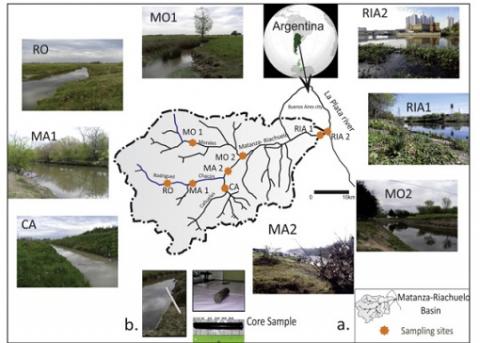Liliana Norma Castro, Alicia Elena Rendina, Maria Julia Orgeira
2 018
Science of the Total Environment, Volume 627, 15 June 2018, pages 125-133
Contamination assessment in riverbed sediments depends on the accurate determination of the background values. The aim of this study is to assess the degree of contamination and to evaluate the most adequate background for the determination of anthropogenic contamination in Cd, Cr, Cu, Ni, Pb and Zn in bed sediments of the Pampean area river basin (Matanza-Riachuelo River and tributary streams), Argentina. The geo-accumulation index (Igeo) values were calculated using selected lithogenic backgrounds (loess, loessoid sediments and paleosoils), the metal concentrations in the residual fraction (F4) in riverbed sediments and a global average shale often applied in the estimation of toxic metal Igeo. The IgeoF4, IgeoLZB and most of the others Igeos, indicated that in land areas used mainly for agriculture and cattle grazing, the superficial sediments were uncontaminated with Cd, Cr, Cu and Zn, and slightly contaminated with Ni and Pb. Conversely, in those areas dedicated to urban and industrial use, the metal contamination was greater. Overall, the relatively significant anthropogenic contamination of Cr > Pb ≥ Cu > Zn > Ni > Cd in the Riachuelo River area was associated with metallurgic activities, tanning and industrial waste. The comparative analysis of different values suggested that Buenos Aires’ “pristine” loess could be recommended to evaluate the Igeo index of riverbed sediments in the Pampean area. To enhance the use of the selected background, the normalized enrichment factor using Al. In this study case, the Igeo and the EF using LZB background display the same trend, showing the greatest degree of contamination, as would be expected, in Riachuelo samples (RIA 1 and RIA 2) located in the urban/industrial area.
https://doi.org/10.1016/j.scitotenv.2018.01.219

